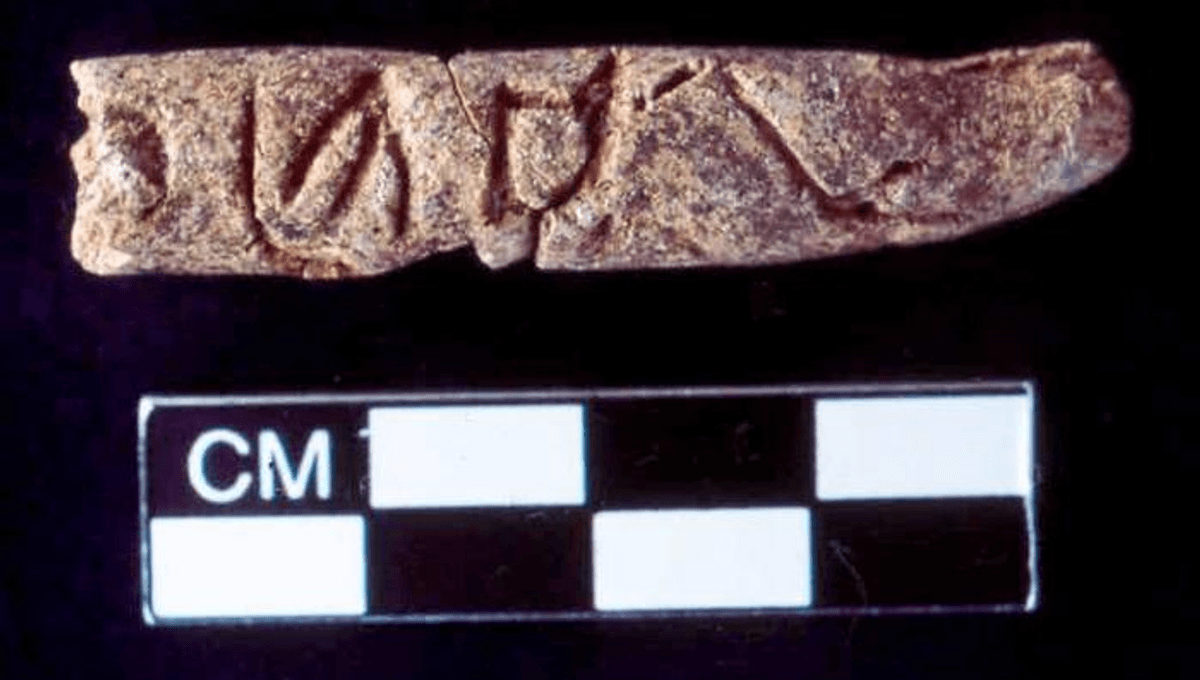
The transition from symbols like hieroglyphics to writing may have happened much earlier than had been thought, an archaeologist has claimed. However, if the evidence stands up to scrutiny, it poses the question of why one of humanity’s greatest inventions appears to have taken so long to gain widespread use.
There’s probably no way to settle the question of which of humanity’s technological innovations was most important, but writing has to be a contender. The capacity to store and transmit information accelerated the spread of everything that came afterwards, as well as allowing new developments that would have been unlikely or impossible before.
However, writing might be more fairly considered to be two major advances: pictograms like hieroglyphics, followed by the development of the alphabet thousands of years later. However, the gap between the two may not have been quite as large as we thought, based on the contents of a 4,400-year-old Syrian tomb.
“Alphabets revolutionized writing by making it accessible to people beyond royalty and the socially elite. Alphabetic writing changed the way people lived, how they thought, how they communicated,” said Professor Glenn Schwartz of Johns Hopkins University in a statement.
It was thought that this innovation took place around 1900 BCE. Examples of alphabetic scripts appear first in Egypt around that time. However, in 2004 Schwartz was part of a team conducting a dig at Tell Umm-el Marra, an ancient city in western Syria that he suspects, but has not yet proven, is the city referred to as Tuba in ancient records. Schwartz believes Umm-el Marra was founded around 2700 BCE.
Many things have become dangerous in Syria over the last 20 years, archaeology included, so follow-up at the site has been limited. Before the war, however, tombs from the Early Bronze Age around 300 years after the city was founded revealed exceptional treasures, providing gold and silver jewelry somehow escaped grave robbers for millennia. Modern historians may place an even higher value on pottery vessels and cookware, but beside the pots Schwartz found something he now thinks has greater significance still.
Four lightly baked clay cylinders the size of fingers have markings on them that Schwartz told The American Society for Overseas Research’s Annual Conference appear to be a form of alphabetic writing. Yet carbon-14 dating of the tomb itself and some of its contents indicate these were made 500 years before the oldest previous such writing we know.
“The cylinders were perforated, so I’m imagining a string tethering them to another object to act as a label. Maybe they detail the contents of a vessel, or maybe where the vessel came from, or who it belonged to,” Schwartz said. “Without a means to translate the writing, we can only speculate.”
Schwartz has previously published two analyses of the cylinders, which tentatively raised the idea these were predecessor of the alphabet, but now appears to be making the case with more confidence.
Even if the dating is right, Schwartz’s case may be disputed on the grounds that the markings’ resemblance to an alphabet is a coincidence. There are only 12 symbols on the cylinders and one of them looks more like a hieroglyph than a letter. The muted response to Schwartz’s previous work suggests he has yet to convince most of his peers.
“Previously, scholars thought the alphabet was invented in or around Egypt sometime after 1900 BCE,” Schwartz said. “But our artifacts are older and from a different area on the map, suggesting the alphabet may have had an entirely different origin story than we thought.”
If Schwartz’s claims are accepted, they raise the question of whether this early script represents a sort of ancestor of the Egyptian alphabet, or if it formed a sort of dead end? Either answer would require further explanation. Why would such a useful innovation not survive, if it didn’t, only to be reinvented centuries later? Was there something about this script that made this initial effort at alphabetic writing less user-friendly than the one that conquered the world, and therefore caused it to be abandoned?
Alternatively, if our modern alphabet has roots 500 years further back in time, why have we not found examples of it in between? Syria and Egypt are not that far apart, but one might still expect to see some signs of an innovation’s journey.
Cylinders played a big part in the development of writing. Coincidentally, earlier this month another cylinder was proposed to represent evidence for how one of the most important pre-alphabetic forms of writing developed. For centuries before the alphabet, cuneiform pictograms represented the written language of Mesopotamia and surrounds. According to a paper in Antiquity, a stone cylinder dating from Uruk in around 3000 BCE shows how stones engraved with symbols were rolled onto clay tablets to leave stamped impressions. This cylinder provides the first direct evidence for a link between these seals and proto-cuniform’s development.
Schwartz’s previous work on the cylinders’ markings are published in a book, Opening the Tablet Box, and open access in Pasiphae.
Source Link: Clay Cylinders May Rewrite The Timeline On The Origins Of The Alphabet